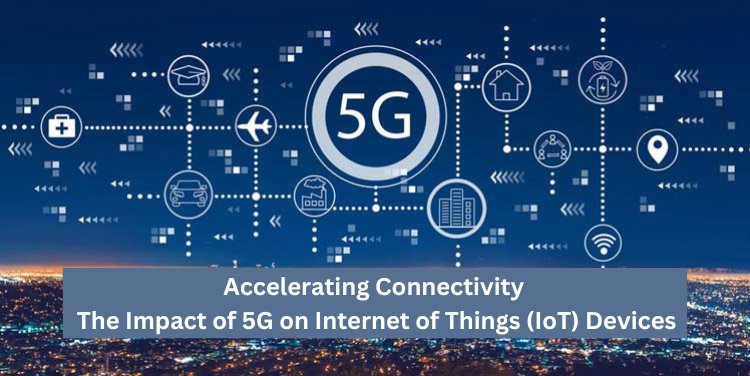Accelerating Connectivity: The Impact of 5G on Internet of Things (IoT) Devices

In the realm of technology, the Internet of Things (IoT) has revolutionized the way we interact with devices and the world around us. From smart homes and wearable devices to industrial sensors and autonomous vehicles, IoT has the potential to transform industries and enhance our daily lives. And now, with the advent of 5G technology, the IoT landscape is poised for even greater innovation and growth. In this blog, we'll explore the impact of 5G on IoT devices and the opportunities it presents for businesses and consumers alike.
1. Enhanced Connectivity and Speed
One of the most significant advantages of 5G technology for IoT devices is its enhanced connectivity and speed. With 5G networks capable of delivering significantly faster data rates and lower latency compared to previous generations, IoT devices can communicate with each other and with cloud services more efficiently and in real-time. This means faster response times, smoother streaming, and improved overall performance for IoT applications across various industries.
2. Scalability and Capacity
5G networks offer greater scalability and capacity, allowing them to support a massive number of IoT devices simultaneously. This scalability is crucial as the number of connected devices continues to grow exponentially, particularly in smart cities, industrial automation, and healthcare. With 5G, businesses can deploy larger IoT ecosystems with confidence, knowing that the network can handle the increased workload without sacrificing performance.
3. Edge Computing and Edge IoT
Edge computing, which involves processing data closer to the source of generation rather than in centralized data centers, is a natural fit for IoT applications. With 5G's low latency and high bandwidth, edge computing capabilities can be extended to a wide range of IoT devices, enabling faster decision-making, reduced data transmission costs, and improved privacy and security. This shift towards edge IoT architecture has the potential to revolutionize industries such as manufacturing, transportation, and logistics.
4. Industry 4.0 and Smart Manufacturing
In the era of Industry 4.0, smart manufacturing relies heavily on IoT devices to optimize production processes, improve efficiency, and reduce downtime. With 5G connectivity, manufacturers can deploy IoT sensors and devices throughout their facilities, enabling real-time monitoring, predictive maintenance, and autonomous control systems. The high-speed, low-latency nature of 5G networks unlocks new possibilities for smart manufacturing, paving the way for the factories of the future.
5. Autonomous Vehicles and Smart Transportation
Autonomous vehicles and smart transportation systems rely on high-speed, reliable connectivity to operate safely and efficiently. 5G technology provides the necessary infrastructure to support these advanced systems, enabling vehicles to communicate with each other, with infrastructure, and with cloud-based services in real-time. From traffic management and fleet optimization to enhanced driver assistance and safety features, 5G-powered IoT devices are driving innovation in the transportation industry.
The combination of IoT and 5G technology holds immense promise for businesses and consumers alike, unlocking new opportunities for innovation, efficiency, and connectivity. From smart homes and wearable devices to industrial automation and autonomous vehicles, 5G is revolutionizing the way we interact with IoT devices and shaping the future of technology. As 5G networks continue to roll out globally and IoT adoption accelerates, we can expect to see even greater advancements in IoT applications and services, transforming industries and improving lives in the years to come.
What's Your Reaction?















